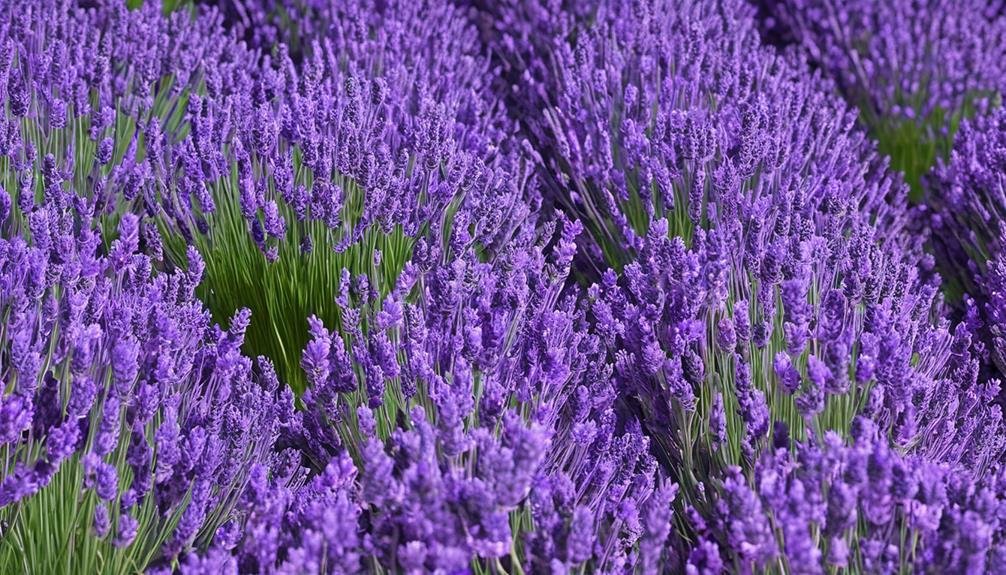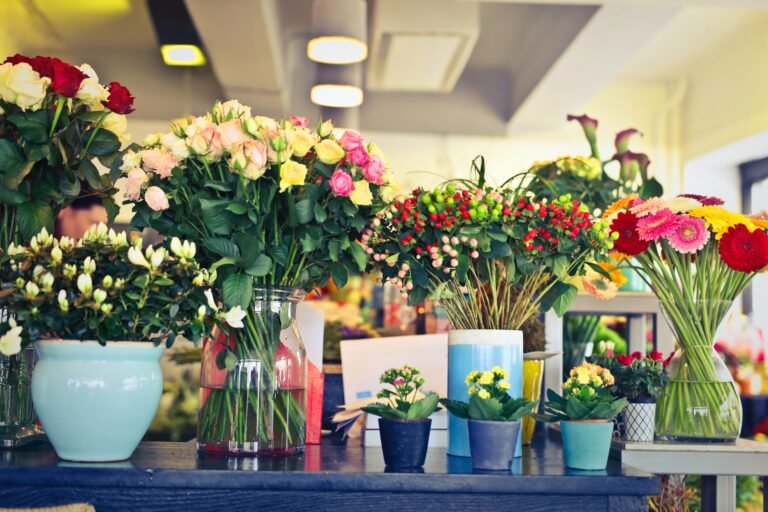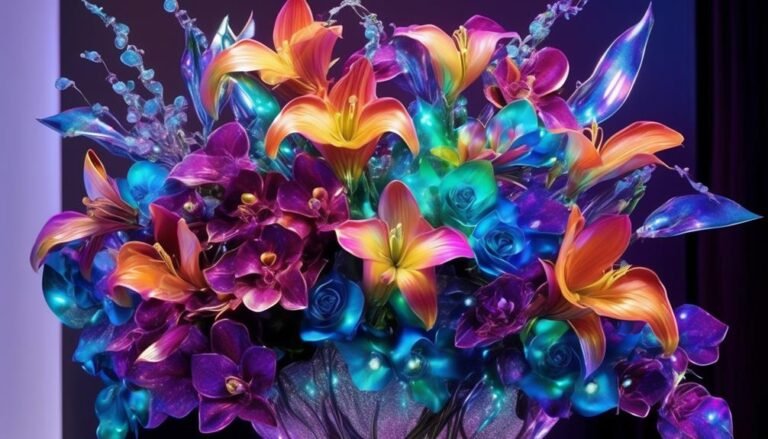Popular Types of Florist Flowers – Lavender
Lavender: A Fascinating Flower for Florists and Enthusiasts
Lavender, also known as Lavandula, is a captivating flower that comes in a diverse range of colors and has a multitude of uses. It is widely cultivated and has a rich history with many fascinating varieties to explore.
Botanical Intricacies of Lavender
Lavender is a member of the mint family and is known for its aromatic flowers and foliage. It is a hardy perennial herb that is prized for its fragrant blooms and essential oils. The flowers are typically purple or blue in color, although there are also pink and white varieties. Lavender is known for its calming and soothing properties, making it a popular choice for aromatherapy and herbal remedies.
Seasonal Availability and Care Tips
Lavender is a versatile plant that thrives in sunny, well-drained soil. It is drought-tolerant once established and requires minimal maintenance. Depending on the variety, lavender can bloom from late spring to early fall, making it a great addition to any garden or floral arrangement. When harvesting lavender, it's best to do so in the morning when the essential oils are at their peak. The flowers can be dried and used in sachets, potpourri, and culinary applications.
Varieties of Lavender
There are over 450 varieties of lavender, each with its own unique characteristics. Some popular types include English lavender (Lavandula angustifolia), French lavender (Lavandula stoechas), and Spanish lavender (Lavandula dentata). These varieties differ in their growth habits, flower shapes, and fragrance profiles, offering a wide range of options for florists and gardeners.
In conclusion, lavender is a versatile and fascinating flower with a rich history and a wide array of varieties. Whether used for its aromatic properties, ornamental value, or therapeutic benefits, lavender is a beloved choice for florists and enthusiasts alike.
Scientific Name
Lavender, scientifically known as Lavandula angustifolia, is a versatile and prized florist flower. Its essential oil is widely used in aromatherapy for its calming and relaxing effects, which can help alleviate stress, anxiety, and insomnia. The oil also has antibacterial and antifungal properties, making it a valuable addition to natural skincare products.
Medicinally, Lavandula angustifolia has been traditionally used to treat headaches, migraines, and minor burns due to its anti-inflammatory and analgesic properties. It's also known for promoting wound healing and is often used in formulations for treating cuts, scrapes, and minor skin irritations.
Additionally, the pleasant fragrance of Lavandula angustifolia makes it a popular choice for adding a delightful scent to soaps, perfumes, and sachets. Overall, Lavandula angustifolia's myriad uses in aromatherapy and medicinal properties make it a highly valued florist flower.
Background History
Lavender has a rich history dating back to ancient times, where it was used in various cultures for its diverse applications. In aromatherapy, lavender's calming and relaxing properties have made it a popular choice for essential oils and scented products. Its cultural significance varies across different regions, being associated with purity, cleanliness, and relaxation in Mediterranean and Middle Eastern cultures.
The Greeks and Romans used lavender for bathing, cooking, and as a perfume, showcasing its early importance in daily life. Throughout the Middle Ages, lavender was valued for its fragrance, medicinal properties, and as a strewing herb, highlighting its versatility and practicality in different historical contexts.
Lavender's uses in aromatherapy have persisted through the ages, reflecting the plant's adaptability and widespread appeal. From ancient civilizations to the present day, lavender has maintained its relevance as a versatile and beneficial botanical resource.
Physical Description

Lavender is a versatile plant with rich historical significance and diverse species. True lavender, or Lavandula angustifolia, is a semi-shrub with blue, purple, white, and pink flowers. French lavender, or Lavandula stoechas, has ornamental bracts and prefers low-lime, sandy soils, producing white, pink, and purple flowers. Spike lavender, or Lavandula latifolia, known for its strong aroma, is found in higher regions of the Mediterranean.
Lavender's essential oil is widely used in aromatherapy for relaxation and stress relief. Hardy varieties like Jamlitz, Blue Scent, and Ellagance Purple can withstand temperatures as low as -15 °C. Consider factors like fragrance, flower color, growth habit, and bloom time when choosing lavender for specific climates and gardening preferences.
Consulting gardening resources or experts can provide valuable recommendations for successful cultivation. Lavender's physical characteristics and aromatic properties make it a sought-after addition to gardens and aromatherapy practices worldwide.
Colours and Characteristics
Lavender flowers come in shades of blue, purple, white, and pink, adding a charming touch to gardens and floral arrangements. Its slender leaves and tall flower heads give it an elegant appearance, making it a striking addition to bouquets and gardens.
Known for its soothing fragrance, lavender is popular for aromatherapy, promoting relaxation and reducing stress and anxiety. In addition to its visual appeal, lavender is also used in culinary dishes to add a delicate, floral flavor.
Furthermore, lavender has various health benefits, with anti-inflammatory and antiseptic properties. Its essential oil is used in natural remedies for headaches, insomnia, and skin conditions.
Varieties Available

When it comes to choosing lavender varieties, it's essential to consider their specific characteristics and growth requirements for your intended use.
True Lavender (Lavandula angustifolia) is known for its sweet fragrance and is great for cooking and essential oils. It needs well-drained, alkaline soil and full sun.
French Lavender (Lavandula dentata) has serrated leaves and can tolerate warmer temperatures. It thrives in sandy, well-drained soil and prefers full sun or partial shade.
Spike Lavender (Lavandula latifolia) is high in camphor, ideal for medicinal and aromatic purposes. It requires well-drained, slightly acidic soil and full sun.
Lavender varieties come in blue, purple, white, and pink, offering ornamental and decorative uses. Understanding their soil and sun preferences is crucial for successful cultivation.
Whether you need lavender for culinary, fragrant, medicinal, or decorative purposes, selecting the right variety based on these specific characteristics is key.
Seasonal Availability
Lavender flowers are typically available from late spring to early summer. The best time to plant them is in the spring or fall. Planting in early spring allows for robust growth and vibrant blooms by late spring to early summer when it's in season.
Lavender is a versatile flower used in floral arrangements. It adds fragrance and color to bouquets, centerpieces, and wreaths. Its calming aroma also makes it popular for potpourri and sachets.
Understanding the seasonal availability of lavender is crucial for optimal growth and bloom. This applies whether you are sourcing it as a florist or growing it in your own garden.
Care Tips

Lavender Care Tips for Optimal Growth and Health
Soil and Sun: Lavender flowers thrive in well-draining soil and full sun. Avoid overwatering to prevent root rot, and water deeply but infrequently, allowing the soil to dry out between watering.
Pruning Techniques: Regular pruning after blooming is essential to promote new growth and maintain the plant's shape. Use clean, sharp shears to remove spent flower stems and about one-third of the top growth, being careful not to cut into old wood. This encourages the plant to produce new shoots and results in a fuller, more compact shape.
Culinary Uses: Lavender flowers can be harvested in the morning for the best fragrance and used in various culinary creations. Incorporate them into herbal teas, infuse them into simple syrups for cocktails, or add them to baked goods like cookies, cakes, and scones. Always ensure that the flowers are pesticide-free and haven't been treated with chemicals, and use them sparingly due to their potent flavor.
Are Lavender and Lilac Similar and Can They Be Used Together in Floral Arrangements?
Yes, lavender and lilac are similar in color but come from different types of florist flowers. They can be used together in floral arrangements to create a beautiful and harmonious look. Both flowers add a soft and romantic touch to any bouquet or centerpiece.
Conclusion
Lavender, also known as Lavandula, is a popular choice for florists due to its beauty, versatility, and various uses. This flower comes in different varieties such as True Lavender, French Lavender, and Spike Lavender, offering a range of colors, characteristics, and scents.
Its hardiness and seasonal availability make it a sought-after choice for both florists and gardeners. In addition to its ornamental value, Lavender is also used for culinary, fragrance, and medicinal purposes.
Proper care and maintenance are essential to ensure the longevity and vibrancy of these stunning flowers, making them a versatile and attractive option for floral arrangements.






